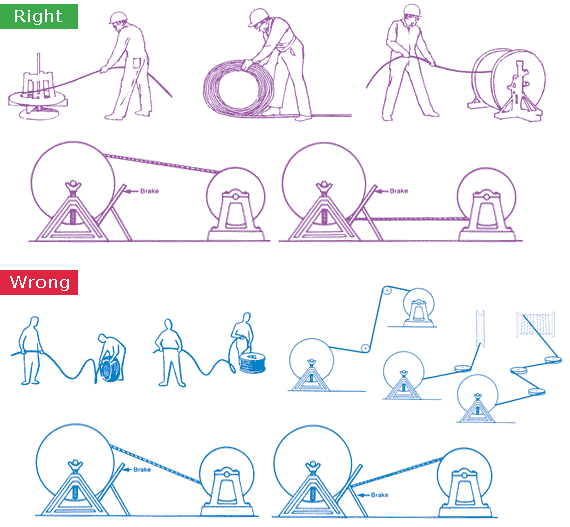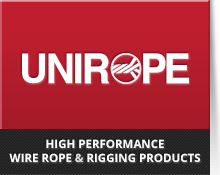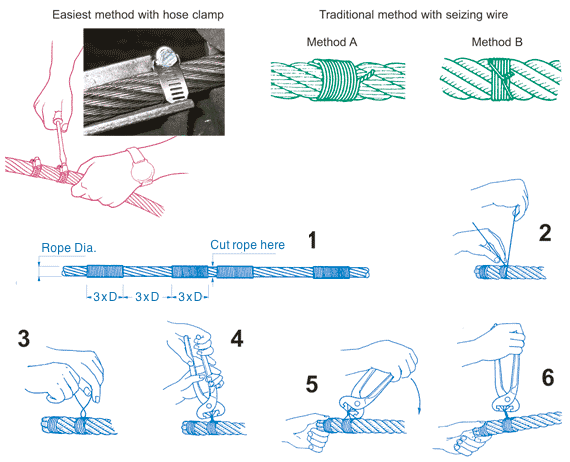|
When removing the rope from the shipping reel or coil, the reel or coil MUST rotate as the rope unwinds. Any attempt to unwind a rope from stationary reel or coil WILL result in a kinked rope that is ruined beyond repair. The following illustrations demonstrate the right and wrong way of unreeling a rope. Special care must be taken not to drag the rope over obstacles, over a deflection shaft, or around corners. Avoid large fleet angles between the shipping reel and the first sheave. The rope may roll in the sheave causing the rope to unlay. This is particularly important for all DoPar, langs lay, and non-rotating rope constructions. |
Avoid reeving the rope through small deflection sheaves and avoid changing the plane from vertical to horizontal direction. If you have to unspool large and heavy wire rope, use a brake to keep a slight tension on the rope. NEVER let the rope go slack and form loops. All of these precautions apply to Python® as well as to standard 6-strand, 19×7, 19×19, and 34×7 wire ropes. If in doubt, contact your nearest Unirope® representative. |




